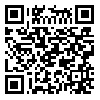BibTeX | RIS | EndNote | Medlars | ProCite | Reference Manager | RefWorks
Send citation to:
URL: http://tumj.tums.ac.ir/article-1-343-en.html
Background: There are multiple diagnostic methods for evaluation of patients with low back pain with a radicular pattern, each one has it's own accuracy and diagnostic ability and so comparing them with each other would help the clinicians to find the best diagnostic method. The main objective of our study was to compare the diagnostic accommodation of electromyography (EMG) and Magnetic Resonance Imaging (MRI) findings in patients with low back pain and radiculopathy.
Methods: In this descriptive cross-sectional study, 101 patients with low back pain and radiculopathy attending to Sina Hospital in Tehran, Iran from 2007 to 2009 that had indication for both EMG and MRI were evaluated for their demographic characteristics and disease-related factors.Results: Totally, 90 out of 101 patients (89%) had abnormal EMG findings and 94 out of 101 subjects (93%) had abnormal MRI results. The concordance rate was 88% (89 patients) with no significant difference (p> 0.05). The sensitivity and specificity of MRI were 95.6% and 27.3%, respectively, and the sensitivity and specificity of EMG were 91.5% and 60%, respectively.
Conclusion: According to the results of this study and in comparison with other studies it may be concluded that MRI and EMG are both accurate and use of them in a concomitant manner would result in increased diagnostic ability in patients with low back pain and radiculopathy.| Rights and permissions | |
 |
This work is licensed under a Creative Commons Attribution-NonCommercial 4.0 International License. |





